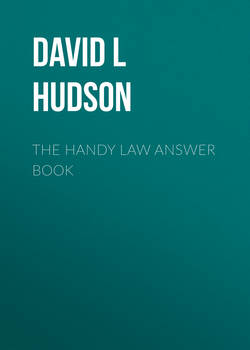Читать книгу The Handy Law Answer Book - David L Hudson - Страница 35
На сайте Литреса книга снята с продажи.
What was the Virginia Plan?
ОглавлениеThe Virginia Plan, introduced on May 29, 1787, formed the basis of the Convention and was debated word by word. The plan contained 15 resolves. It was the first plan introduced in the convention and the one that most closely resembled the convention’s final product. It proposed that the powers of the federal government should be expanded to accomplish three goals: “common defence, security of liberty and general welfare.” Resolve number three provided for two houses of the Congress, or a bicameral legislature. Under the Virginia Plan, the people would elect the first branch. Then, the members of the first branch would elect the second branch of the “National Legislature.”
Under the Virginia Plan, the U.S. Congress would possess great power. Resolve number six granted Congress the power to negate, or veto, any laws passed by state legislatures. Resolve number seven provided Congress with the power to appoint the “National Executive” or leader of the country. Thus, under this plan, Congress, not the people, would select the national leader. Resolve number nine provided for a “National Judiciary” or a set of judges that could hear cases throughout the country.
The Virginia Plan was, therefore, a plan for the structure of the new United States government under the new Constitution being discussed in the Philadelphia Convention. It established the three branches of government—the legislative, executive, and judicial branches; it called for a bicameral legislature; and it provided that each house would be selected based on the population of the respective states, meaning that the larger more populous states would have more representatives and senators. The Virginia Plan also called for a very strong national government.
